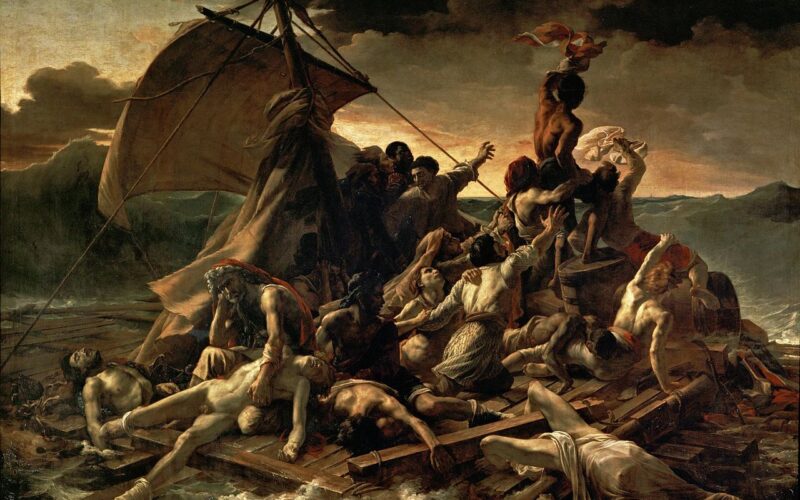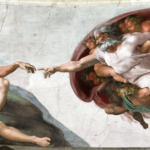The painting titled “The Raft of the Medusa,” created by Théodore Géricault between 1818 and 1819, serves as a landmark in the artistic landscape, a cornerstone of Romanticism, and a sharp social commentary. On the large canvas, the artist depicts a tragic, real-life naval disaster that significantly shook public opinion at the time: the shipwreck of the French frigate Méduse and the desperate struggle for survival of its survivors.
With this work, Géricault breaks away from the neoclassical tradition, which usually focused on heroic mythological or biblical figures. Here, the artist turns his focus onto a contemporary event, bringing harsh reality into the foreground.
The painting is imposing in both dimensions (approximately 16 feet by 23 feet) and its emotional impact. The bodies, both living and deceased, on the raft are arranged in a dramatic composition, so that a diagonal line guides the viewer’s gaze from the agonizing figure in the foreground to the distant horizon, where a minuscule sign—emblematic of the hope of rescue—is barely discernible.
There is a clear contrast between light and dark in this painting. The darkness of the stormy sky and the menacing waves is balanced by the brightness of the raft and the bodies, creating a theatrical effect that heightens the drama of the scene.
However, “The Raft of the Medusa” is not merely a dramatic painting; it is also a political commentary. The shipwreck of the Méduse was the result of poor management by the captain, an aristocrat who had obtained his position through connections with the Bourbon Restoration, rather than through merit. Géricault’s critique of the ruling class is apparent.
In conclusion, “The Raft of the Medusa” is a work that combines artistic skill, stylistic innovation, and social commentary in a manner that was revolutionary at the time and remains powerful today. It represents not only human tragedy but also societal indifference and the corruption of power. Through his painting, Géricault not only shows us the horror of the shipwreck but also invites us to reflect on its deeper causes.












